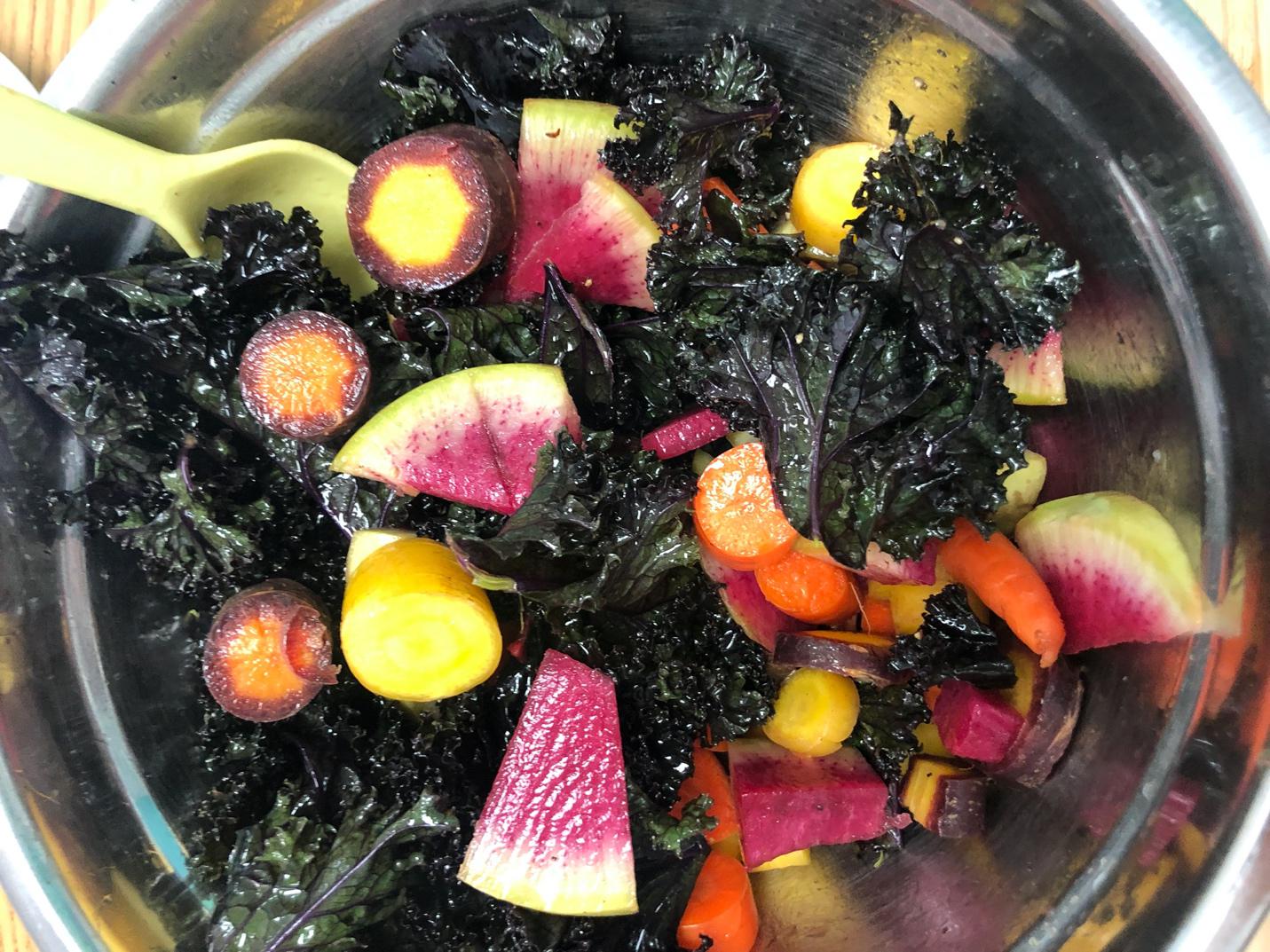
Exploring watermelon radish, colourful carrots and red kale,
How many of your favourite colours can you see in this meal?! We loved making this rainbow salad in our urban farming and cooking class, and hope it delights your little one’s eyes at home! Check out our classes if you’re interested in guided age-appropriate cooking instruction every Saturday!
But first, the star of the show! Introducing colourful new foods prompts curiosity and interest, which can lower the anxiety of trying new foods. Asking specific questions about HOW something tastes, WHERE they taste it on their tongues, and HOW it brings out or covers other tastes prompts an open exploration. When your little one’s feel the one correct answer to “do you like it?” needs to be yes, it fuels their food anxiety further. To learn more about the five core flavour profiles and where they are located on your tongue with prompts, see our article: “The Power of Ketchup – your next great tool to expand your little one’s palates.”
So, what in the world is a watermelon radish, also known as shinrimei? This is an heirloom variety, which means the seeds were open-pollinated over time. Originating from the Chinese daikon radish, gardeners will select seeds from parent plants that have characteristics they like and want to continue, in this case it’s beautiful pink colour and mild taste. This process relies on natural pollination methods via insects or the wind.
They are also a member of the brassica or mustard family, just like turnips and arugula. Unlike other members of its family however, the watermelon radish will mellow in its “peppery” flavour as it gets older, making it the perfect snack to keep on hand! A versatile veg, you can roast them, snack on them raw with a little salt or hummus, pickle them, mash them, or enjoy them in a dish like this.
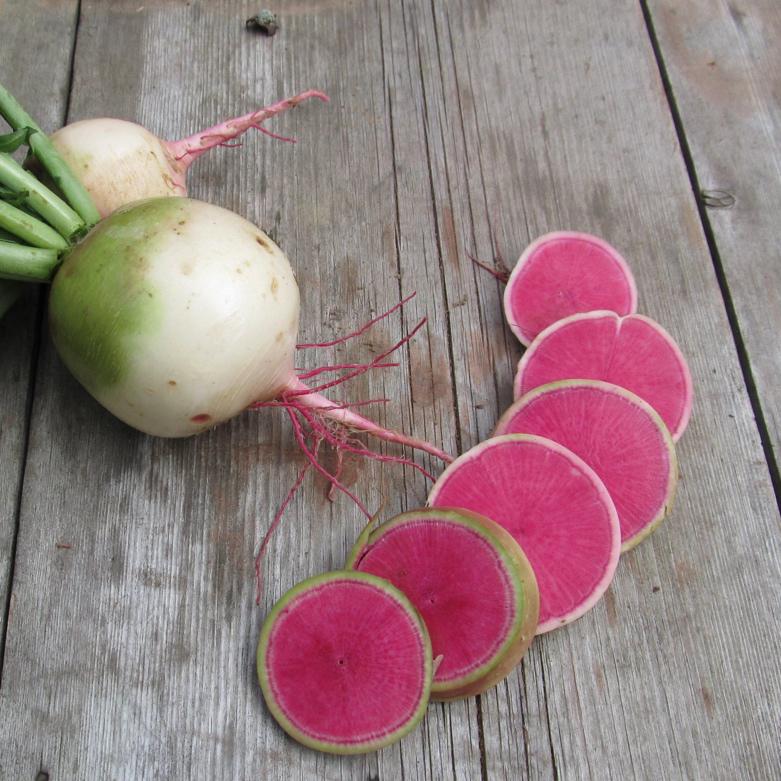
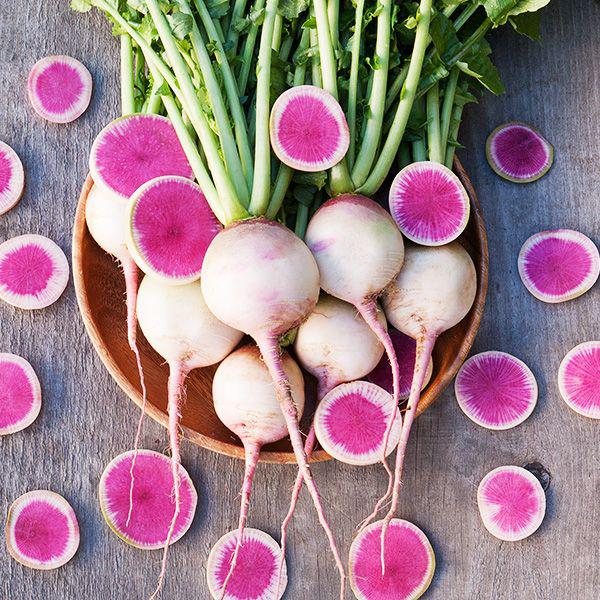
Ingredients:
- Watermelon Radishes – 1-2 (when purchasing, choose firm radishes that feel heavy for their size, they make have some remaining dirt, but they shouldn’t have blemishes)
- 1 bunch of carrots (we selected an heirloom bunch to further explore colour gradients and make our rainbow, but feel free to pick any you’d prefer)
- ½ a bunch of kale (we picked red for more colour, but any will do)
- Olive oil (2-3 tbs)
- Rice or white wine vinegar (1 tbs)
- Salt & pepper
- Maple syrup or honey (1 tbs)
To top:
- Slice of lemon (optional)
- Pumpkin seeds (optional)
Supplies:
- A cutting board and knife
- Washing bowls (or use the sink and faucet)
- A large mixing bowl
- A small vinaigrette mixing bowl
- Towel or paper towel
Instructions
The first step in any recipe:
Wash your hands! Cooking together is a great way to reinforce good hygiene habits. As we’re working with raw egg especially, it’s a good idea to tie all long hair into a bun or pony tail so no hands are accidentally touching their face as they work.
Steps:
- Wash your watermelon radishes by gently scrubbing any dirt off, these do not need to be pealed. We like to take a bowl per child and fill them with shallow water, then race to see who can scrub their radish clean first!
- Slicing Time! Either thinly slice the radish to reveal the beautiful colour gradient, or chop into watermelon-reminiscent slices. We like to do a few of both and examine the change in colour and texture then set aside to later add to the mixing bowl.
- Kale time! After rinsing the leaves and using a paper towel or towel to pat off excess water, ask your child to tear smaller bits off of the main stem and toss them in the mixing bowl. These should be about an inch in size. The key to delicious kale is massaging the leaves. Add 1-2 tbs of olive oil depending on the quantity, roll up those sleeves, and start massaging all the leaves so they are evenly covered. Set the bowl aside and allow the leaves to sit while you prep the rest.
- Time to chop! After washing, we sliced our carrots into small circle to see the colours change from the outside in, but you can also peel them into ribbons or smaller pieces based on preference.
- Combine your carrots and watermelon radish slices to the kale mixing bowl and stir.
- In a separate smaller bowl, mix one tbs of rice or white wine vinegar, one tbs of maple syrup or honey, salt, pepper, and one tbs of olive oil. Mix well.
- Pour your fresh vinaigrette over the radish, kale and carrots in the large mixing bowl, and enjoy!
Question prompts for exploratory discussion:
- What colour do we think the inside will be?
- How small do you think they can be? (Answer: a golf ball)
- How large do you think they can grow (Answer: a softball)
- Where do you think they grow? Do we pick them like apples, or do we dig them up? HINT – what does the dirt we scrubbed off tell you?
- Do you think they like the heat or the cold? (Answer: they thrive in cold soil)
- What textures do you feel? Is there a crunch? Is it mushy? How do they feel combined in bites versus in separate bites?
How does it compare? Set aside a few taste testers to compare the raw vegetable to the finished product, what differences do we notice? What stays the same? Are any flavours or textures enhanced? Do any disappear? - For Kale, explore the parts of the leak we can see
- Blade (scientific word Lamina: ) – the main leaf, not including the stems, veins and petiole. This is where the plant “Breathes” and where it “eats” when it takes in sunlight and turns it into food!
- Stem – supports the leaf (like how our skeleton supports us!)
- Petiole – holds the plant together and connects the stalk to the leaf
- Veins – moves water, minerals and energy through the plan, just like our veins move important things for us!
- Epidermis – the plant’s skin, this protects the leaf and sometimes secretes a waxy protective cuticle to keep it safe. Think of it as the winter coat that keeps the plant safe and warm!
Nutritional Benefits & Facts
- Watermelon Radish:
- Full of: vitamin C, potassium, magnesium, calcium, zinc, B vitamins, and fiber
- They are 89-95% water to help you stay hydrated!
- Carrots
- Originated from a Middle Eastern crop called Queen Anne’s Lace
- The cold converts some of the vegetable starches into sugars, making carrots even sweater after a light frost
- Full of: vitamin A (over 100% of your daily supply in just one serving), vitamin B6, vitamin K, and other nutrients.
- Kale
- Another brassica plant! Kale is also closely related to cabbage, broccoli and cauliflower
- There are more than 50 different varieties worldwide!
- Kale has been grown for over 2000 years
- Kale also likes the cold! Because the leaves have a waxy layer called the epidermis, it can grow in colder month
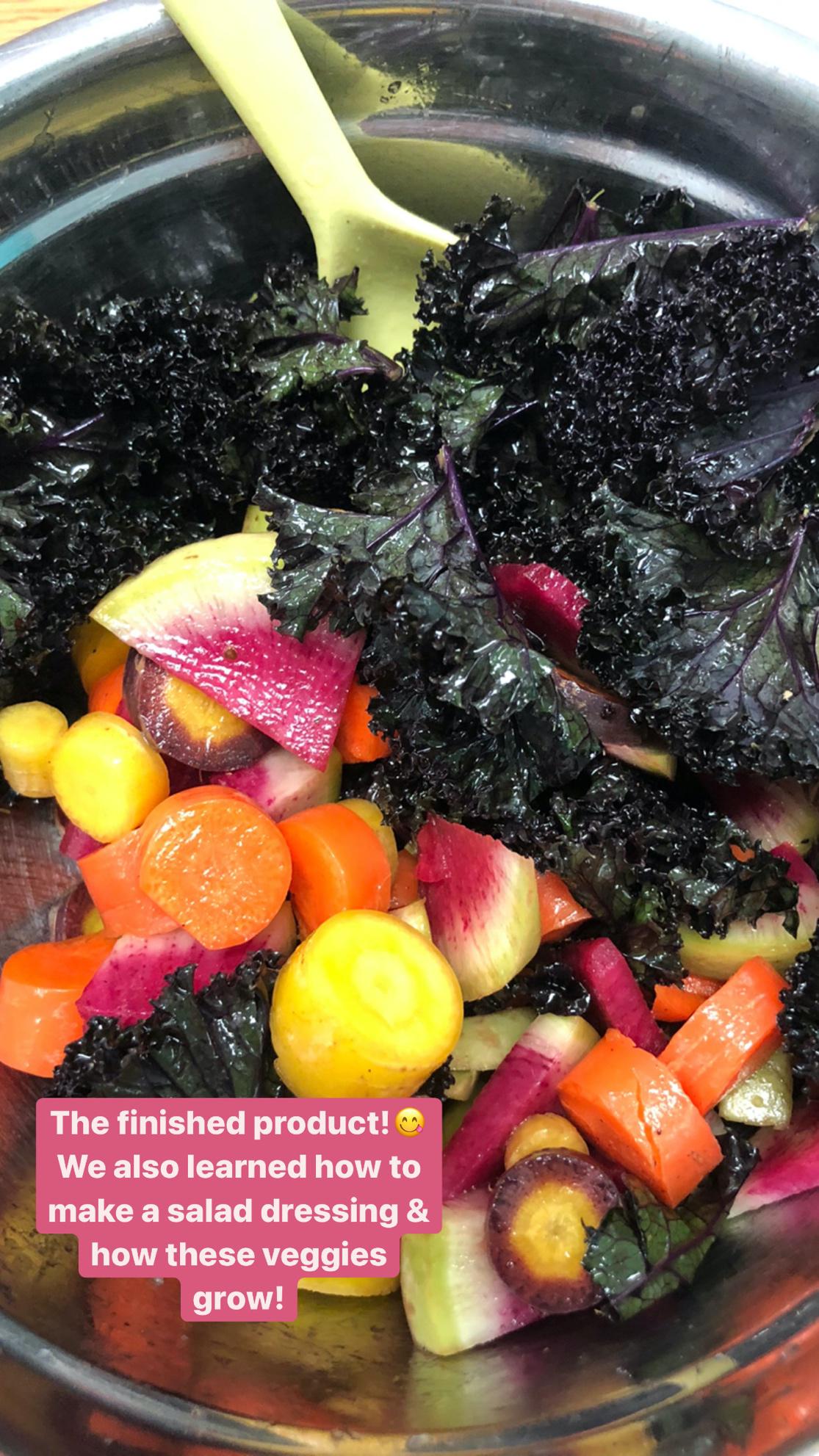
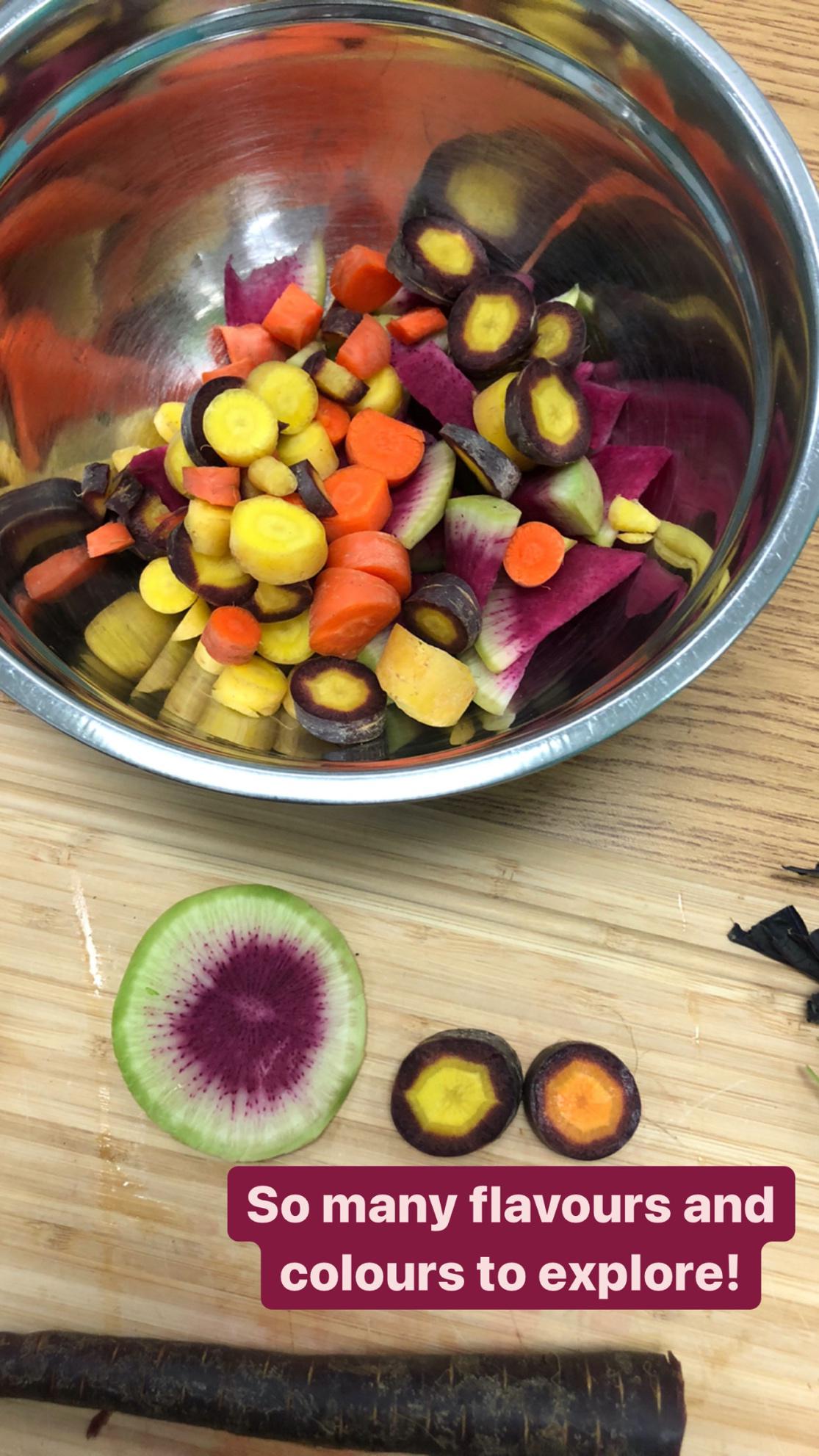
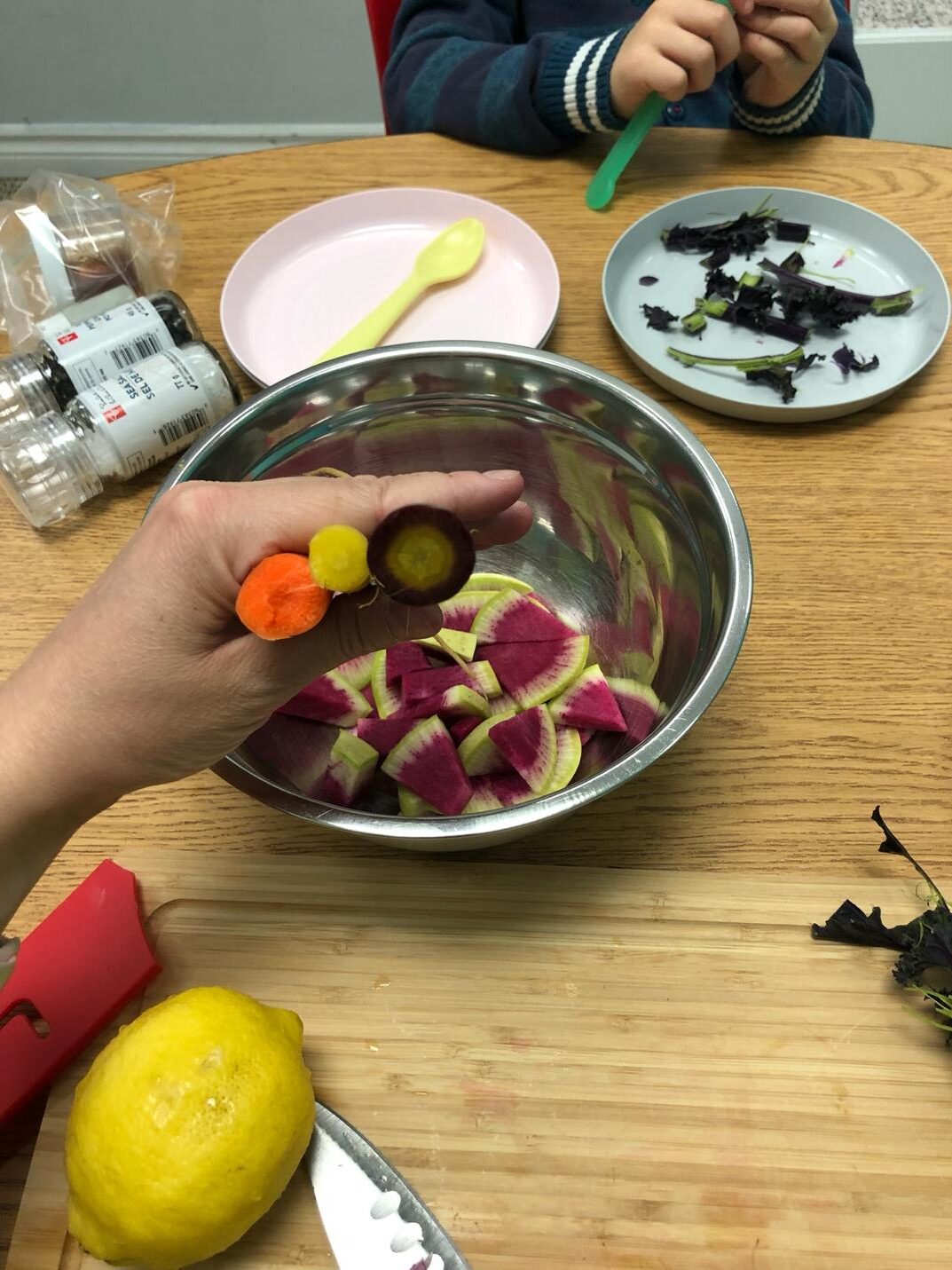
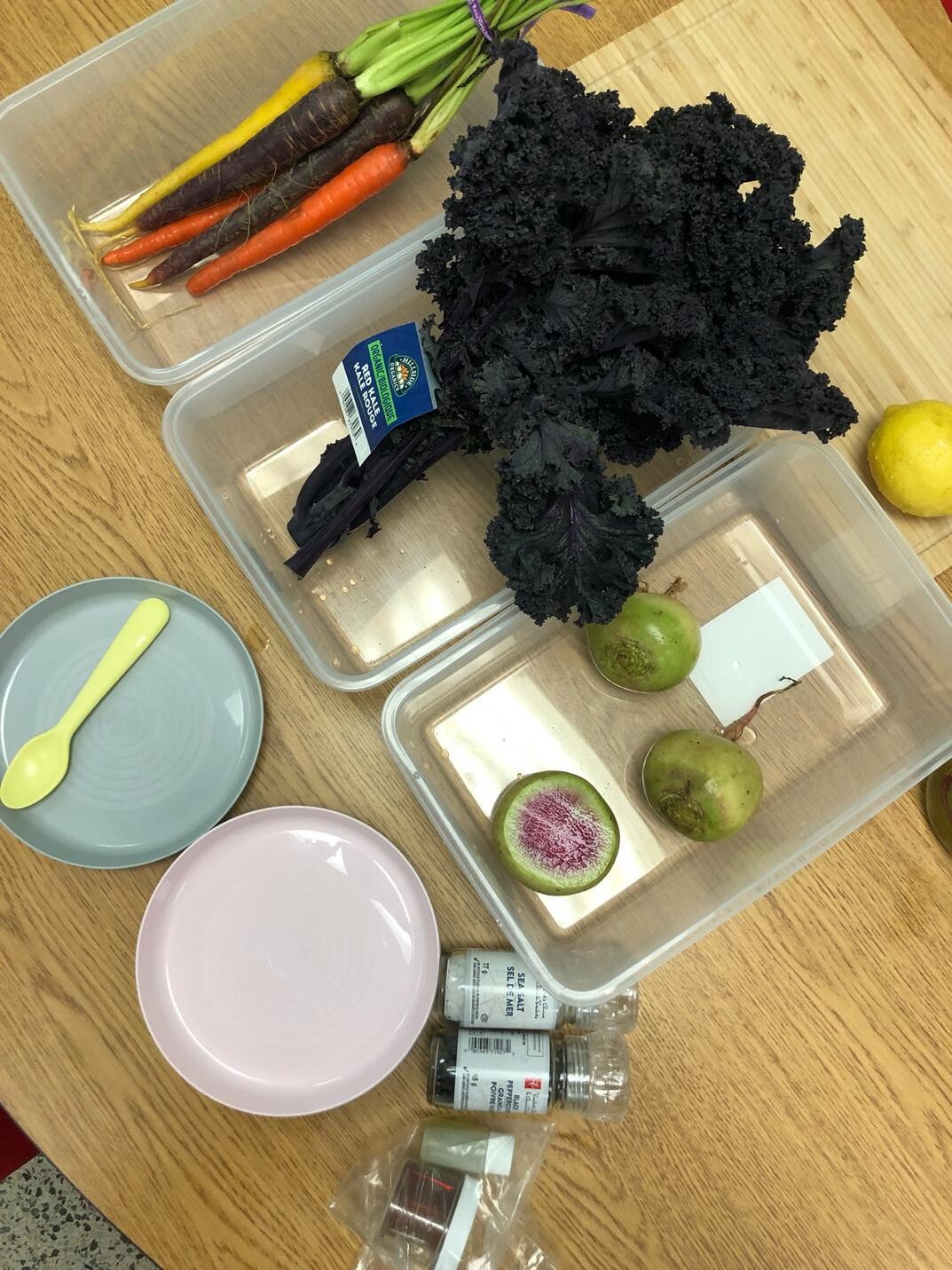
Get updates on new classes, hosted events, and more.










